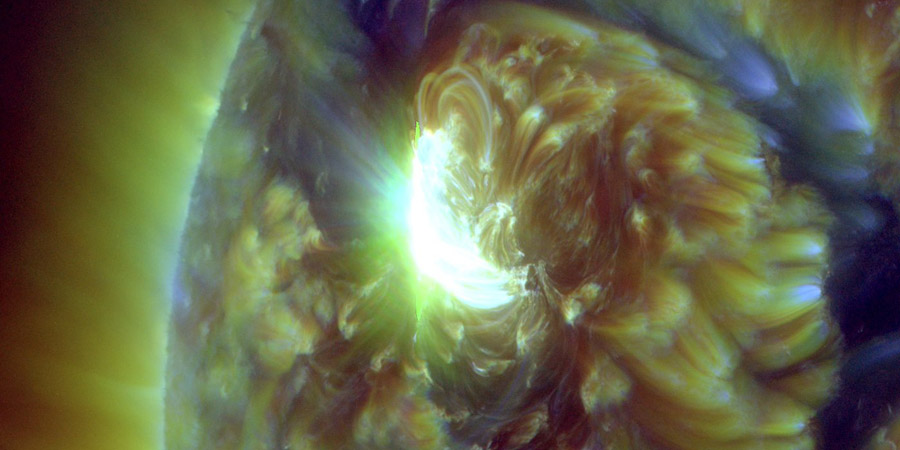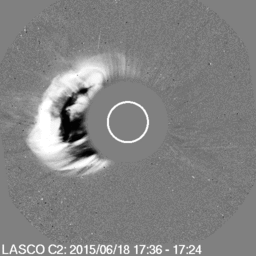M3 solar flare with earth-directed CME
Friday, 19 June 2015 00:45 UTC

Just hours after we mentioned the potential of sunspot region 2371, it erupted with a stunning long duration M3.0 (R1-minor) solar flare that peaked at 17:36 UTC. A large coronal mass ejection was launched that expanded to an asymmetrical full halo coronal mass ejection. What that means is that this coronal mass ejection is likely to arrive at Earth in a couple of days.
Strong M3.06 solar #flare from #sunspot region 12371 - Follow live on http://t.co/XHATH0OOfT pic.twitter.com/Qd6QVGyRUa
— SpaceWeatherLive (@_SpaceWeather_) 18 juni 2015
Video: the M3.0 solar flare as seen by SDO in the 193 Angstrom wavelength.
The solar flare was a long duration event and despite only being a minor event when it comes to strong solar flares, it produced a very respectable coronal mass ejection. As was to be expected, the bulk of the plasma cloud can be seen heading well east of Earth but on SOHO/LASCO C2 (see animation below) we can see that the coronal mass ejection expands to form a full halo around the coronagraph and that means good news for sky watchers around the world: this plasma cloud will likely arrive at Earth.

CACTus estimates that the coronal mass ejection left the Sun at a speed of about 800km/s. Factoring in the current ambient solar wind speed of 400km/s which will slow down the CME a bit, we conclude that the coronal mass ejection will take about two and a half to three days to arrive at Earth. We expect this coronal mass ejection to arrive at Earth around 12:00 UTC on Sunday (June 21) with a plus/minus of 6 hours.
As we said before, the bulk of the coronal mass ejection is not coming towards us but the halo was very well defined on LASCO which means we do expect a decent impact. There will be a good chance for minor G1 geomagnetic storming conditions after the plasma cloud arrives with a lesser chance for moderate G2 geomagnetic storming conditions if the direction of the IMF (Bz) cooperates.
Thank you for reading this article! Did you have any trouble with the technical terms used in this article? Our help section is the place to be where you can find in-depth articles, a FAQ and a list with common abbreviations. Still puzzled? Just post on our forum where we will help you the best we can!
Latest news
Latest forum messages
Support SpaceWeatherLive.com!
A lot of people come to SpaceWeatherLive to follow the Sun's activity or if there is aurora to be seen, but with more traffic comes higher server costs. Consider a donation if you enjoy SpaceWeatherLive so we can keep the website online!

Space weather facts
| Last X-flare | 2025/03/28 | X1.1 |
| Last M-flare | 2025/04/30 | M2.03 |
| Last geomagnetic storm | 2025/04/21 | Kp5+ (G1) |
| Spotless days | |
|---|---|
| Last spotless day | 2022/06/08 |
| Monthly mean Sunspot Number | |
|---|---|
| March 2025 | 134.2 -20.4 |
| Last 30 days | 123.3 -5.8 |


